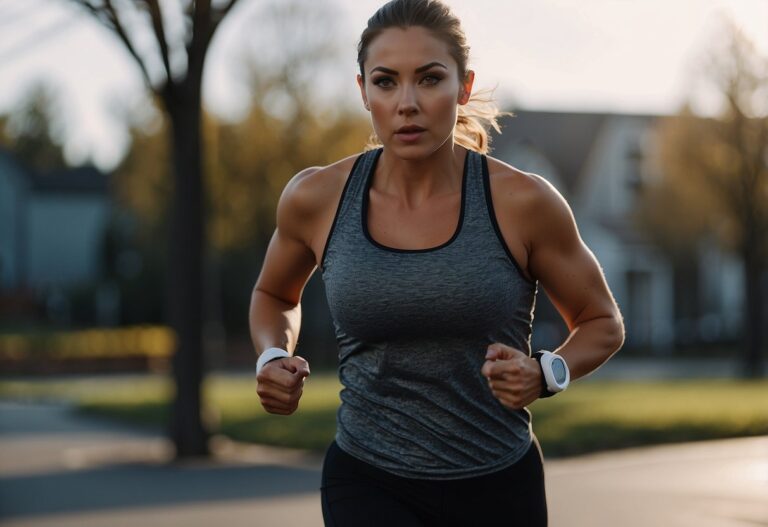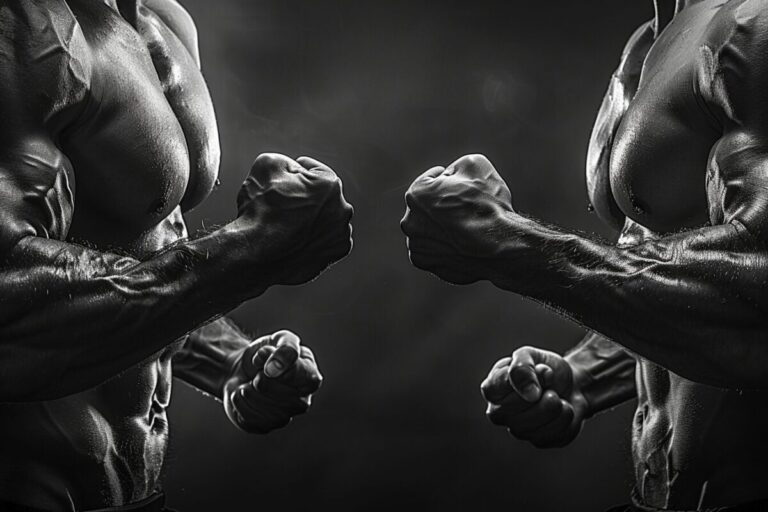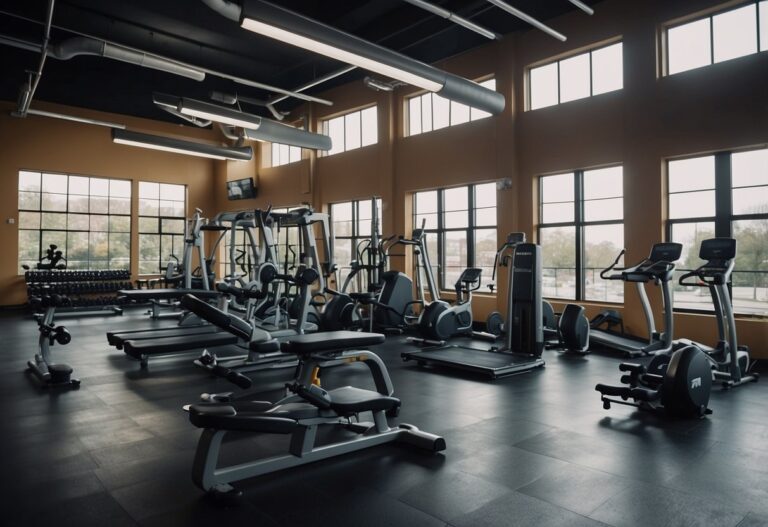When you hit the gym with the goal of sculpting your upper body, the shoulder press is your go-to move.
There’s no doubt it’s a phenomenal exercise for targeting those deltoid muscles, which are the rounded, triangular muscles that cap your shoulders.
But have you ever found yourself wondering why, when you’re pressing those weights above your head, your biceps start to feel like they’re doing most of the work?
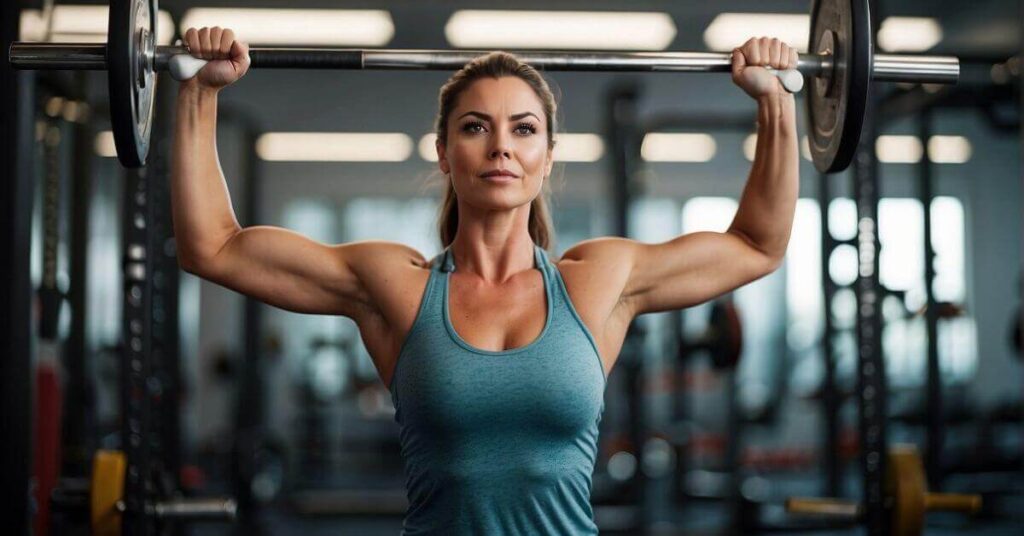
You’re not alone if you’ve felt this switch in muscle activation. The shoulder press is meant to target the delts, yet here are your biceps moving in doing half the heavy lifting, quite literally!
It might surprise you, but how you engage your arms during the exercise can lead to unintentional bicep engagement. If your elbows are flaring out, or maybe your grip is too tight, you’ll start to feel the pull, or even pain, in your biceps!
But don’t worry, there’s a few simple tweaks you can make that will help you refocus the effort back to where it belongs.
Key Takeaways
- The shoulder press targets the deltoids but can incorrectly engage biceps if form is off.
- Proper elbow alignment and grip are key to focusing on the deltoids.
- Warm up, select appropriate weights, and maintain posture to prevent bicep takeover.
- Strengthen shoulder and supporting muscles for balanced upper body development.
The Anatomy of Shoulder Press
Imagine lifting something heavy above your head—like grabbing your favourite book off a high shelf or swinging your niece into the air at the park. These are the moments you’re prepping for when you’re pushing weight overhead in a shoulder press.
What about sports? Whether you’re swinging a golf club or throwing a tennis ball, a strong shoulder can improve your game. It’s all about that power and stability, and yes, the shoulder press helps with that too. So, keep lifting, and remember, the shoulder press isn’t just another exercise; it’s the foundation for almost every upper body workout you’ll ever do.
When you perform a shoulder press, you engage multiple muscles around your shoulder joint. The primary movers are your deltoid muscles, which consist of three distinct sections: the anterior deltoid at the front, the lateral deltoid in the middle, and the posterior deltoid at the back. These muscles work together to lift weights overhead.
During a shoulder press, the anterior deltoid is crucial for initiating the upward movement. As your arm goes overhead, your medial deltoid takes over to continue the lift. Lastly, the posterior deltoid stabilises your shoulder as you push the weight up. The trapezius muscle, located in your upper back, also helps by supporting your shoulder blade.
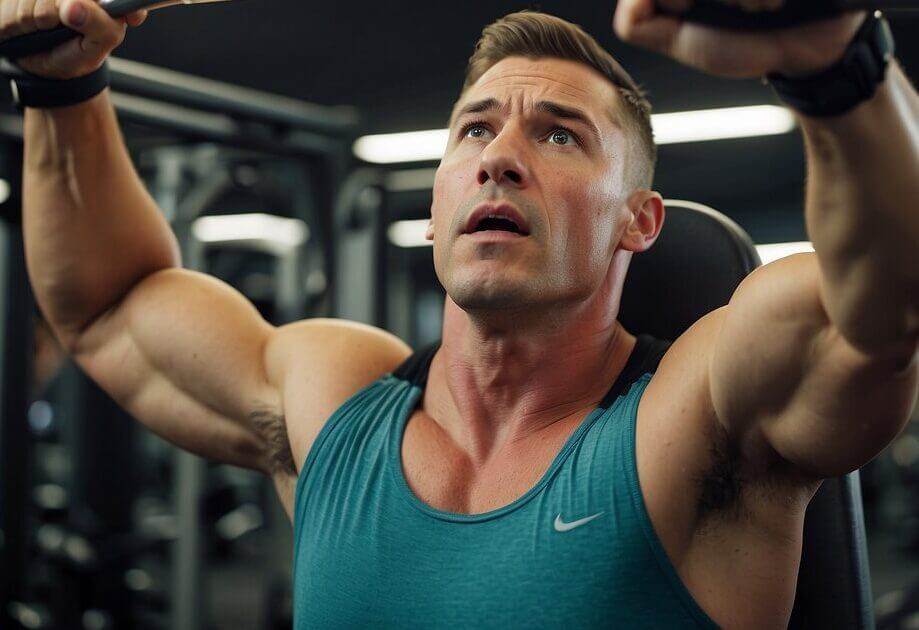
Synergistic muscles (secondary muscles usually used for stabilisation), such as your biceps, come into play as well, especially if there are form issues. If you’re feeling the exercise in your biceps more than you think you should, it might be a sign to reassess your technique to make sure your shoulders are doing the heavy lifting.
But the shoulder press isn’t just about the shoulder. Your core must stay engaged to keep you stable, and this is where your rotator cuff muscles also chip in to keep the shoulder joint stabilised.
An effective shoulder press targets the full shoulder anatomy comprehensively. Proper technique is massively important in avoiding excessive strain on muscles not primarily responsible for the press – such as your biceps.
For in-depth instructions on the correct form and benefits of the shoulder press, you may want to consider the training guide provided at how to use the shoulder press machine. It’s vital to remember though, by maintaining a strong form, you keep the tension where it’s supposed to be: on your delts!
The Role of the Biceps in the Shoulder Press
When you perform a shoulder press, your biceps brachii are working behind the scenes as a key synergistic muscle.
The biceps stretch from the shoulder to the elbow. They aid in keeping your elbow joint steady as you lift and lower weights.
Though they’re not the main agonist (or working muscle) in the shoulder press, your biceps help in weight control. This means they work to stop any wobbly, awkward arm movements that could cause injury. That’s their stabilising role.
Your biceps aren’t just for flexing at the beach; they’re secondary muscles during arm exercises. By engaging, they allow for smoother motions and better control over the dumbbell or barbell path.
Here are some real-world examples:
- When you lift groceries onto a high shelf, those biceps brachii prevent your arm from going all wobbly.
- If you’re passing a heavy object, like a box of books, to someone else, it’s your biceps working hard so you can move your arm smoothly.
Remember, your biceps might be considered secondary muscles in the shoulder press, but they’re absolutely essential for that vital stabilising action that keeps your movements controlled and safe!
Reasons for Bicep Engagement During Shoulder Press
Proper execution of a shoulder press involves more than just hoisting weights overhead. Technique cannot be overstated; it’s the difference between targeting the right muscles and wasting your efforts.
Poor Form and Technique
If your form is off, you might be calling upon your biceps to do work meant for your deltoids. This misstep is not just about muscle targeting; it’s about the whole exercise efficiency and staying clear from injury.
The most common form and technique mistakes are:
- Grip Tightness: If you’re holding on to the bar like it’s the last chocolate biscuit, relax a bit! A too-tight grip can shift some of the work to your biceps. Try a grip that’s firm but not white-knuckle.
- Elbow positioning: If you let your elbows flare out, you’re inviting your biceps to the party uninvited. Instead, keep them tucked in alignment with your body to emphasise shoulder activation.
Weight Path: Keep the bar path as straight as a ruler. An uneven path is not only dangerous but also invites your biceps to chip in more than they need to.
- Muscle Fatigue: When your shoulders start to fatigue, your biceps will activate and help with the lifting. Bear this in mind when reaching the end of a set, for example.
Incorrect Posture: The way you sit or stand can make or break the exercise. Keep your feet shoulder-width apart when standing, and your core engaged. A strong stance helps keep that load distribution balanced. Don’t slouch as this will lead to bicep activation.
Narrow Grip: If your hands are too close together, your biceps are more likely to be utilised in the lift. Find that sweet spot where your grip is just outside your shoulders to ensure efficiency in the overhead motion.

Muscle Imbalance and Weakness in Supporting Muscles
Ever heard the term “muscle imbalance”?
Muscle imbalance is a concept in physiology and biomechanics that refers to an unequal distribution of strength, flexibility, or size between opposing muscle groups or specific muscles within the body.
Muscle imbalances can sometimes lead to compensatory movements or the recruitment of muscles that are not typically involved in a specific exercise.
When performing a shoulder press, the primary muscles targeted should be the deltoids (shoulder muscles), triceps (back of the upper arm), and various stabilizing muscles in the shoulders and upper back.
However, if there is a muscle imbalance or weakness in certain areas, such as the muscles responsible for stabilizing the shoulder joint, the body may recruit other muscles to compensate for the weakness.
This can lead to the biceps being used during a shoulder press, which is not the intended or most efficient way to perform the exercise.
Refining Your Shoulder Press Technique
Corrections and adjustments don’t need to be tough. To ensure your shoulder press is focusing on your delts, keep these simple pointers in mind.
Warm-Up
Before even picking up weights, make sure you engage in warm-up exercises to prime your muscles. Simple arm circles or resistance band pull-aparts can do wonders for preparing your shoulders for the overhead motion.
Weight Selection
Heavier doesn’t always mean better, especially if it’s compromising your form.
Better to press with pride than lift with regret.
Start with a weight that allows you to maintain form without your biceps jumping in to assist. If you’re straining, those biceps will want to take over, so maybe dial it back a bit.
Focus on the mind-muscle connection
Remember, when you lift, the goal is to challenge your shoulders and not your biceps.
With each press, envision the weight being pushed strictly by the shoulders. Your biceps should not be doing the heavy lifting—literally. This mental cue helps maintain the right form.
Check your elbow alignment.
They should be positioned under your wrists throughout the movement. This helps target your deltoids effectively and takes unnecessary strain off your biceps.
Keep elbows slightly in front of your body rather than directly at the sides This tweak helps maintain good form and keeps the focus on the deltoids.
Adjust your grip
Sometimes a slight change in where your hands are can shift the work from your biceps to your shoulders. Play around with grip width where your grip is just outside your shoulders to ensure efficiency in the overhead motion.

Maintain Posture
Start each rep with a tight core and a braced spine. As you press upwards, ensure the motion is smooth and controlled.
Execute each rep with precision.
Visualise the correct movements as you go through each phase of the lift. The aim is to fluidly move the weight in a controlled overhead motion without swinging or jerking.
Incorporate exercise variations
To keep your routine fresh and to challenge your deltoids in different ways. This could mean switching from a barbell to dumbbells or incorporating a push press every now and then.
Strengthening Shoulder and Supporting Muscles
To develop your upper body properly, embrace exercise variety and progressive overload. Start by bolstering your deltoids with specific exercises like lateral raises or front raises. You can use resistance bands or light free weights to keep things diverse and avoid muscle fatigue.
Complementary exercises, such as rows and pull-ups, promote muscle balance and ensure your deltoids and trapezius can effectively support your shoulder press movements. This approach to upper body development helps distribute the work across your muscles, so you’re not feeling it all in your biceps.
When it comes to a proper shoulder press, it’s all about technique. Making sure your delts are doing the heavy lifting rather than your biceps is crucial for muscle isolation.
Just a few small changes can make a big difference.
Conclusion

The shoulder press is a fundamental exercise for sculpting your upper body and targeting your deltoid muscles.
However, if you find that your biceps are taking over during the shoulder press, it’s a sign that your form may need adjustment. Proper technique and muscle focus are essential for an effective workout.
The shoulder press engages various muscles in your shoulder joint, with the deltoids being the primary movers. Synergistic muscles, including the biceps, play a stabilizing role but should not take over the exercise.
Several reasons can lead to bicep engagement during the shoulder press, including poor form, muscle imbalances, and weakness in supporting muscles.
To refine your shoulder press technique and ensure that your deltoids are doing the heavy lifting, remember to warm up, choose an appropriate weight, focus on the mind-muscle connection, check your elbow alignment, adjust your grip if necessary, and maintain proper posture.
Incorporating exercise variations and strengthening shoulder and supporting muscles through complementary exercises can also help distribute the workload effectively.
By making these small adjustments and prioritizing proper form, you can maximize the benefits of the shoulder press and avoid unnecessary strain on your biceps. So keep lifting, and remember that a strong shoulder press forms the foundation for almost every upper body workout you’ll ever do.


